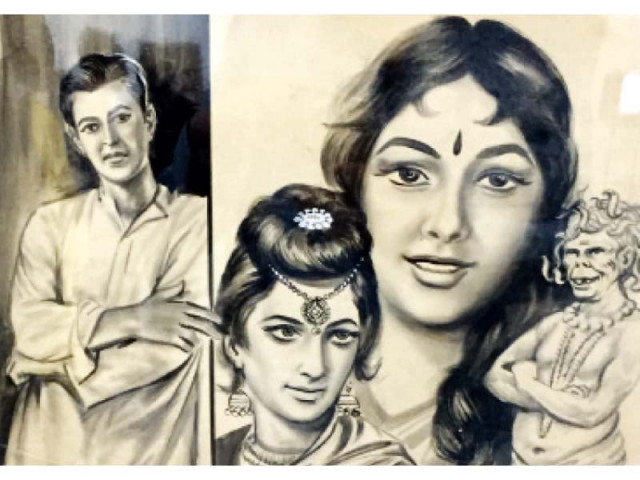Illustrative legacy: A son pays homage to his father’s career
Works of digest artist Sajjad Ahmed Siddiqui are on display at Alliance Française

Digest artist Sajjad Ahmed Siddiqui’s earliest work for an Indian movie magazine Shamaa (1940s) to his sketches for detective and crime stories (1970s), are available for the audience to view and cherish. PHOTOS: COURTESY AFK
In memory of his late father Sajjad Ahmed Siddiqui, a notable illustrator, Zafar Siddiqui has put the original copies of his father's work on display. The event is titled, 'Kaghzi hey Perahan har Pekar e Tasvir ka' Magazine and Digest Art, from father to son.'
From Sajjad's earliest work for an Indian movie magazine Shamaa (1940s) to his sketches for detective and crime stories (1970s), are available for audience to view and cherish. With pencil being the only medium, there is expression, nature and above all a sentimental edge to the illustrations put on display.
Promoting cultures: ‘All for Fun, Fun for All’ at Alliance Francaise
"All of his works have remained with me for the past 40 years and there is no better way to honour it but to showcase in these highly digitised times," said Zafar while speaking to The Express Tribune.
Speaking from his personal experiences as an illustrator in Pakeeza Digest, he added that the readers take illustrations very seriously, even to their minute details. "I remember, many of my female readers were very disgruntled when once I drew a widow wearing bangles," he said, admitting that it was the only time he didn't read the story. "It was a lesson learnt," he added.
Tales in themselves
Sajjad's work is not just mere aesthetic delight but possesses strong social commentary as well. His sketches from the 1973 editions of Akhbar-e-Jahan reveal many facets of the society we live in. In one of the pictures, a turbaned adult is seen watering a plant and two adolescents are sitting near the plant with sickle in their hands. The sketch sparks a realisation regarding how the younger generations are treating the plant (symbolic of Pakistan) to fulfil their selfish desires.
In another sketch, a woman with gloomy eyes stares into the blank space and is surrounding by an aura of detachment. In another, forlorn branches of trees have their hands raised up in prayer.
The illustrations were originally supporting structures to stories of various genre such as fantasy, crime, erotica and detective stories. Yet, the sketches are tales in themselves and don't require assistive texts to render them complete.
Abdoz Arts to uplift façade of Alliance française
Under the genre of crime, Sajjad has used the symbols of noose, police officers, and people huddled together. In extracts from the Jasoosi Digest (1969 to 1974) he used plenty of symbols from Hindu mythology that enhanced the beauty of his illustrations.
Published in The Express Tribune, November 24th, 2015.



















COMMENTS
Comments are moderated and generally will be posted if they are on-topic and not abusive.
For more information, please see our Comments FAQ